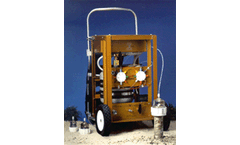- Home
- Applications
- spain
- feeds and feed additives
Show results for
Refine by
Feeds And Feed Additives Product Applications In Spain
9 applications found
Premium
Various food additives – preservatives (benzoic acid, sorbic acid, and their salts), sweeteners (Acesulfame K, saccharine and its salts) and others are widely used in food industry for the improvement of food products properties and extension of storage life. The amount of these additives in food products is regulated by technical instructions and other norms. ...
ByLumex Instruments based in Mission, BRITISH COLUMBIA (CANADA)
Premium
Introduction The technical directives and regulatory requirements specify the total content and relative contents of fructose, glucose and saccharose in juices, nonalcoholic and alcoholic beverages (incl. wines and winemaking materials), fruit and vegetable products, honey, and bioactive food additives. ...
ByLumex Instruments based in Mission, BRITISH COLUMBIA (CANADA)
Premium
Introduction The method is used for the determination of the mass fraction of total inorganic cations (ammonium potassium, sodium, magnesium, calcium) in all types of feedstuffs, compound feeds, fodders, premixes, fodder additives, and feed raw materials (of plant, animal, and mineral origin) by capillary ...
ByLumex Instruments based in Mission, BRITISH COLUMBIA (CANADA)
Premium
Method allows determination of mass concentration of total sulfur dioxide (sulfurous acid and its salts, food additives E220–E228) in wine, wine materials, beer and beer products by capillary electrophoresis (CE) using capillary electrophoresis system “CAPEL® -105M”. The mass concentration of total sulfur dioxide is regulated by normative documents to be held within 100– 400 mg/L for different types of wine and wine materials and within 20–50 mg/L for beer products. According to ...
ByLumex Instruments based in Mission, BRITISH COLUMBIA (CANADA)
Premium
Naturally occurred is predominantly L-form of tartaric acid whereas its D-form and the relevant racemic mixture can be artificially synthesized. Generally, artificial acidification of wine with tartaric acid is allowed by OIV, but only pure L-form must be used for this purpose. Thus the analysis of tartaric acid isomers either in food additives or directly in wine can be an important parameter in clarifying any deviations in wine production. Analysis of isomers of malic acid is also within the necessary ...
ByLumex Instruments based in Mission, BRITISH COLUMBIA (CANADA)
Premium
The method can be applied for all types of feedstuffs, compound feeds, fodders, premixes, fodder additives, and feed raw materials. The present method does not allow the determination of bound ...
ByLumex Instruments based in Mission, BRITISH COLUMBIA (CANADA)
Premium
Introduction The method is used for the determination of the mass fraction of ascorbic acid and its salts in food additives and fodder additives (feed additives). The present method does not allow the determination of ascorbic acid in premixes. For the determination of acetic, benzoic, butyric, citric, formic, fumaric, lactic, malic, oxalic, propionic, sorbic, and succinic acids in fodder additives and butyric acid in silage and ...
ByLumex Instruments based in Mission, BRITISH COLUMBIA (CANADA)
Premium
Introduction The method is used for the determination of the mass fraction of water-soluble chloride, nitrate, phosphate, and total sulfate in all types of feedstuffs, compound feeds, fodders, premixes, fodder additives, and feed raw materials (of plant, animal, and mineral origin) by capillary ...
ByLumex Instruments based in Mission, BRITISH COLUMBIA (CANADA)
Premium
Introduction The method is used for the determination of the mass concentration of oxalic, formic, fumaric, succinic, malic, citric, acetic, propionic, lactic, benzoic, sorbic, butyric acids in fodder additives and butyric acid in silage and haylage by capillary ...
ByLumex Instruments based in Mission, BRITISH COLUMBIA (CANADA)



